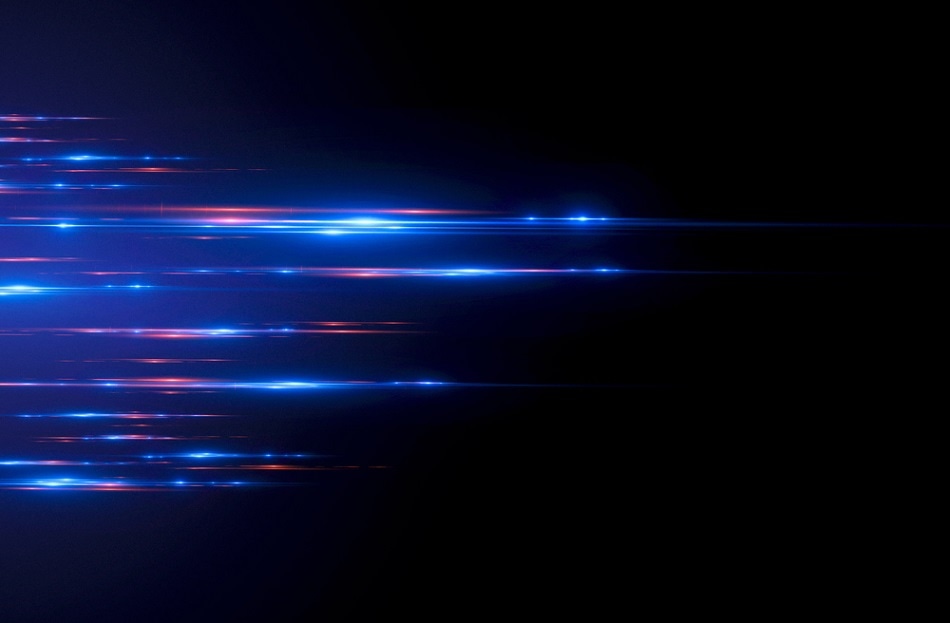Oct 13 2017
The very first laser cavity capable of confining and propagating light in any shape imaginable, even pathways with sharp angles and bends has been demonstrated by Researchers.
 Dmitriy Rybin/ Shutterstock.com
Dmitriy Rybin/ Shutterstock.com
The new cavity, known as a topological cavity, will be able to allow laser components to be packed more densely on a chip, resulting in higher speed optical communication technologies that have the potential to be fabricated in a scalable and efficient manner by using photonic integration techniques.
Laser cavities take on new shapes and functionalities
This paper has been published online by the journal Science.
Our goal is to overcome the fundamental limitations of optical devices and uncover new physical principles that can enable what was previously thought impossible.
Boubacar Kanté, a Professor of Electrical and Computer Engineering, UC San Diego and the Study’s Senior Author
In most traditional lasers, the laser cavity requirements will need to have a regular curved shape, normally a ring, such that light waves can propagate and remain in the cavity. Some of that light will get scattered and lost if the cavity has a sharp turn. This is why, for instance, optical fibers cannot have any bends or kinks.
When you change the shape of the cavity, you change the way light is confined in that cavity.
Babak Bahari, Electrical Engineering Ph.D. Student, UC San Diego and the First Author of the paper
Unable to change the cavity shape also brings about limitations on how many components can be included into a photonic chip.
“If we can deform the shape of the cavity, we can easily fit it in any area on a chip without disrupting or moving other components. This would give us more freedom in designing chip components and making denser, more powerful devices,” Kanté said.
Kanté, Bahari and colleagues have now launched a way to produce laser cavities of arbitrary shapes without bringing about changes in their properties.
They developed a structure made up of two photonic crystals, one surrounding the perimeter of the other. The crystal on the inner side is grown from the same materials as the crystal that surrounds it, but they are what is known as topologically different as they can be described as having varied numbers of holes, such as a bagel (one hole) versus a pretzel (three holes).
The crystals also display a property in which they are capable of both conducting the same wavelength of light on the outside while also behaving as insulators on the inside. By bringing these crystals together, Researchers were able to develop a cavity in which light waves will be able to propagate at the interface present between the crystals.
The Researchers refer to this as a topological cavity. Kanté pointed out that it is not a space, but the border where two topologically varied materials meet. This cavity can be of any shape — square, a loop with jagged edges, triangle — and light can circulate inside that shape without being scattered.
Researchers demonstrated the lasing capability of their device by first coupling a waveguide to the cavity. This was followed by energizing the crystals with light from a high power laser and then applying a magnetic field. Researchers used an infrared camera and observed that their device was emitting a lower frequency laser beam at 1.55 μm, considered to be a common wavelength for telecommunications.
Another notable feature refers to the fact that this device is made up of a non-reciprocal lasing mode, meaning the laser beam will be able to travel only one way. This is not the case with most existing lasers, which require a device known as an isolator to be positioned in front of the source and thus prevent the laser beam from coming back in and possibly destroying the cavity. Isolators are typically huge devices and the new work may therefore eradicate the want for them in the future, Kanté said.
This new feature enables us to make a laser which is self-protected.
Babak Bahari, Electrical Engineering Ph.D. Student, UC San Diego and the First Author of the paper
Going forward, the team hopes to develop an electrically powered device, which would allow it to become more practical. Kanté also plans to further investigate the essential physics of topological cavities. He is mainly interested in exploring how densely such cavities can be packed on a chip. These studies could be vital for quantum information processing and could also overcome basic efficiency limits of existing systems, he further stated.